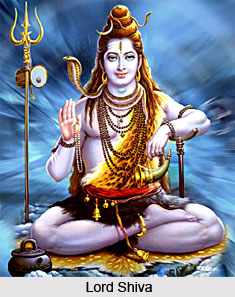 Agni Purana has also described in details the process which is involved in the performance of the Krishna-Ashtami Vrata. It has been stated in the Purana that it should be performed the Vrata should be performed by the penitent in a pure spirit. The penitent should fast in the night, by simply taking a dose of the cow`s urine, sleep on the bare floor, and worship the god Shankara. On the day of performance of the Vrata the penitent the penitent should worship Lord Shiva in the month of Pousha, by taking clarified butter; while he should worship the god Maheshwara in the month of Magha, by living on a diet composed of thickened milk, on the day of observance of the vow.
Agni Purana has also described in details the process which is involved in the performance of the Krishna-Ashtami Vrata. It has been stated in the Purana that it should be performed the Vrata should be performed by the penitent in a pure spirit. The penitent should fast in the night, by simply taking a dose of the cow`s urine, sleep on the bare floor, and worship the god Shankara. On the day of performance of the Vrata the penitent the penitent should worship Lord Shiva in the month of Pousha, by taking clarified butter; while he should worship the god Maheshwara in the month of Magha, by living on a diet composed of thickened milk, on the day of observance of the vow.
It has been stated that the penitent should eat the seeds of sessamum oriental on the day of the eighth phase of the moon in the month of Phalguna, and worship the god Mahadeva. The diet of the penitent on such a day in the month of Chaitra, should consist of barley, the manifestation of the god Hara to be worshipped on the occasion, being Sthanu. Similarly the penitent should worship the Shiva manifestation of the god, on such a Tithi in the month of Vaishaka, by taking only a handful of the washings of Kusha grass. The manifestation of Hara to be worshipped on such an occasion in the month of Jaistha is Pashupati, and the penitent should drink only the washings of Shringa, that day. In the month of Ashada, the penitent shall eat the dung of a cow on a similar occasion, and worship the Ugra manifestation of the deity, Sarva being the deity to be worshipped on the day of the vow (Vrata) in the month of Shravana, the diet of the observer consisting only of Arka. Similarly the Vrati shall worship the Tramvaka manifestation of the god, in the month of Bhadra, eating only the leaves of a Bel tree on the night of observance of the vow.
Agni Purana narrates that the Isha manifestation of the god Hara, in the month of Ashvina, eating rice on the occasion of the Vrata, and the Rudra manifestation in the month of Kartika, taking nothing else than curd on such an occasion. The Homa ceremony should be performed at the close of the year, and the god should be worshipped in the mystic diagram (Mandate), where by the Vrata would be completed. Gifts of cows, clothes, and gold should be made to the preceptor and the Brahmanas. A man, by doing as above indicated and making the necessary prayer in connection therewith, enjoys all the pleasures of life and attains salvation after death. The man, who breaks his fast in the night on the occasion of all the Ashtami Tithis in a year, and makes gifts of cows to Brahmanas at the close of the Vrata, goes to the region of Indra.
In this adhyaya of Agni Purana Lord Agni has also described in detail that the process of performing the Sargati Vrata. It has been said that the Vrata should be performed on the occasion of an Ashtami Tithi, occurring on a Wednesday either in the dark or in the light fortnight of a month. The Vrati (penitent) should not take anything but molasses that day. Men, who observe the vow on the Tithi and in the manner, indicated above, never know any break down in their fortune. The penitent should live on a food, prepared with eight times the quantity of rice as would be contained in the hollow of the palm covered over with the last three fingers. The rice should be served on mango-leaves knitted together and spread over with the blades of Kusha grass. The goddess Ambika should be worshipped with all her retinue and divine appendages, and the observer of the vow should make gifts of rice mixed with Karkati, alter having heard from the preceptor the history of the origin of the Vrata.
It has been mentioned in the Purana that the man, who in the month of Chaitra, drinks the washings of eight tender shoots of an Ashoka Tree, on the day of the eighth phase of the moon`s increase., marked by the asterism Punarvasu, becomes exempted from all grieves. Grief can never approach nor affect a person, who performs the present Vrata which should be practised by reciting the prayer. Finally the Purana says that the man, who worships the Matrikas on the day of the eighth phase of the moon`s increase, in the month of Chaitra, conquers all his enemies without any effort.



















